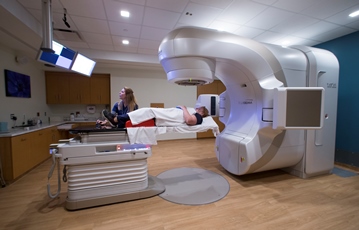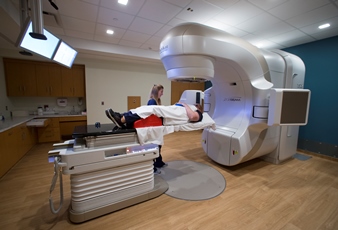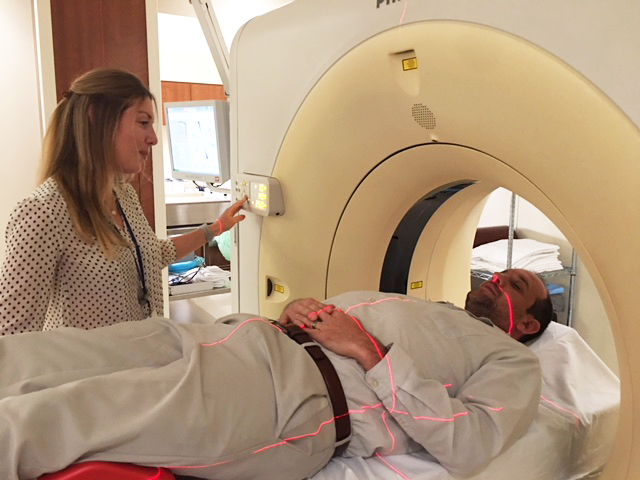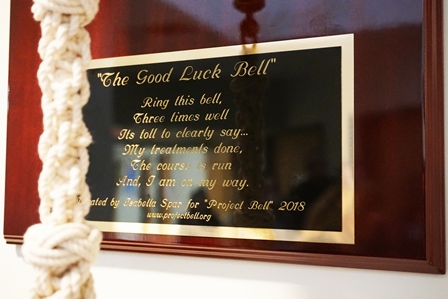Good Samaritan Hospital Offers the Most Advanced Radiotherapy Technology in the Hudson Valley


Contact Us: 845.368.5185
TrueBeam Linear Accelerator

Click below to read more information about the ground-breaking TrueBeam radiation therapy
TrueBeam Linear Accelerator System
Philips CT Big Bore System
New Advanced CT System Enhances Accuracy of Radiation Therapy and Offers Superior Image Quality and the Industry’s Largest True Field-of-View

The CT Big Bore Difference:
When planning radiation therapy for cancer patients, it is critical to accurately target the tumor and spare healthy tissue. In order to achieve this, a CT simulation with excellent image quality and complete visibility of patient anatomy is required.
The CT Big Bore’s large opening allows for more movement and flexibility, in turn, the therapists can capture the images and information needed to accurately prescribe advanced techniques like IMRT and arc treatments.
In addition to ensuring precise positioning, the system is equipped with high-speed imaging software that allows technicians to cover larger areas in the fastest amount of time. The advanced imaging tool kit reduces the time it takes for scanned images to be reconstructed, which leads to faster evaluation and treatment. The technology also makes it possible for clinicians to “mark” an area for treatment and then initiate therapy via one workstation.
The Phillips CT Big Bore’s superior image quality and large field-of-view help improve treatment plans by accurately identifying the target treatment area and improving patient safety by ensuring healthy tissue is spared unnecessary radiation. The device features a large true scan area for full anatomic visualization and it provides fast positioning accuracy between the imaging area and the laser marking area which gives us complete confidence in patient marking and treatment targeting.
The design and features also allow doctors to accommodate bariatric patients. They can comfortably and safely treat all patients while obtaining high-quality images regardless of the patient’s size or position.
SpaceOAR® Hydrogel: Reducing Radiation Side Effects during Prostate Cancer Treatment
Treating prostate cancer with radiation therapy can, for some men, lead to unwanted side effects, such as erectile dysfunction, difficulty urinating, and bleeding with bowel movements.
To improve patient outcomes and enhance their quality of life after treatment, Good Samaritan Hospital has added an innovative new technology called SpaceOAR® hydrogel to our prostate cancer treatment capabilities.
SpaceOAR® hydrogel is a gel-like material that temporarily moves the rectal wall away from the prostate during radiation therapy. The process is minimally invasive, remains stable during radiation therapy and then is gradually absorbed by the body after radiation therapy has been completed. The gel’s placement reduces the amount of radiation that the patient’s rectum receives during prostate treatments, which spares healthy tissue and can reduce complications associated with radiation therapy.
Clinical trials have demonstrated that use of the SpaceOAR® rectal spacer in conjunction with curative radiation therapy results in a 66 percent improvement in bowel related quality of life, a 65 percent improvement in bladder related quality of life, and a 78 percent increase in likelihood of preserved erectile function in patients with adequate pre-treatment function.
The Good Luck Bell

Good Samaritan Hospital strives to treat the whole person, and in an effort to alleviate anxiety at the end of radiation treatment, patients are invited to ring our Good Luck Bell three times to signify the end of their treatment and a new start to their life. When the patient rings the bell, everyone at the treatment center and their friends and family join in the celebration. Patients talk about the date when they are going to ring the bell and support each other by cheering each other on when they ring the bell.
The actual bell was donated by Isabella Spar of Westchester as part of her Bat Mitzvah project -- Project Bell. Isabella was inspired to create this project because her mother underwent successful radiation therapy at a Boston hospital and she saw the impact the bell had on her spirits and she wanted to share that feeling with other families.